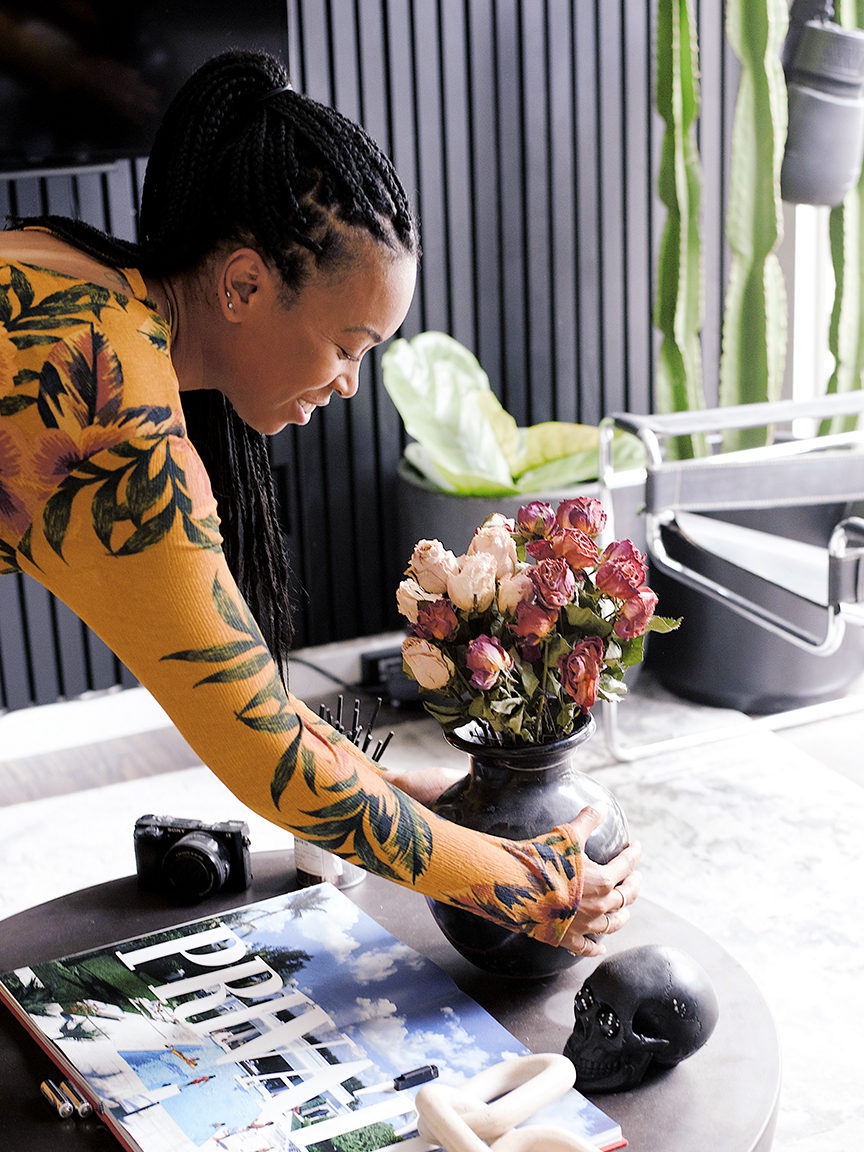We may earn revenue from the products available on this page and participate in affiliate programs.
“I never say dead flowers—they’re dried,” says Tiffany Thompson, founder of Duett Interiors. “They’re not at the end of their life—sometimes I even dry them the day I get them.” The interior designer loves filling her Portland, Oregon, home with dried roses in particular, arranging them in vintage vases she picks up at thrift stores and misting them with just a touch of perfume. They’re the ideal embodiment of wabi-sabi—the Japanese aesthetic centered on embracing imperfections—and a decorative element that reminds Thompson of her roots.
Her grandmother was the first person to introduce her to dried florals—she would put them in her Bible. Years later, Thompson’s boyfriend gave her a bouquet for their anniversary, and the flowers wilted quickly, having been left out of water too long. She was disappointed and brought it up to her mother, who suggested that she dry the flowers like her grandmother did. Soon Thompson began extending the lives of all her bouquets, even sometimes buying flowers for the express purpose of drying them.
After learning about wabi-sabi on a trip to Japan, the designer embraced the philosophy in her decorations. Dried flowers, to her, have a powerful meaning. “They really allow you to see the beauty in things that aren’t perfect—after all, life isn’t perfect,” she says. “When you hone in on that intention, it will come through in your arrangements.” Here, she shares her best tips for perfectly preserving (at least temporarily) fresh florals.
Pick Your Preferred Drying Method

The most traditional way Thompson dries bouquets is by waiting until fresh flowers start to wilt just a bit (about a week or so), then cutting their ends and setting them upside down by wrapping them with twine and hanging them from a hook she has set up in her garage. She sprays them with her favorite perfume or cologne, then allows them to dry out naturally.
For faster drying, she uses silica sand: Working in batches, she covers full stems in a microwave-safe bowl with the sand, then puts that, along with a cup of water, in the microwave for about two minutes. This method also maintains the scent of the flowers. “It just radiates through the entire house, almost like a room spray,” says Thompson. She keeps her dried arrangements for about three weeks before swapping them out for a fresh batch.
Embrace Imperfect Bouquets
Sometimes Thompson dries fresh bouquets that are starting to wilt, but other times she picks up florals for the sole purpose of drying them. For this, she seeks out flowers that might be passed over by the average shopper and more willing to be discounted by florists and grocery stores—a little imperfection makes a dried arrangement look even better—and ones that have plenty of green leaves, which she keeps in the arrangements. For roses in particular, bouquets that are partially bloomed are best. “There’s something really beautiful about the closed buds,” she says. “It’s almost as if they’re keeping a secret.”
Have Fun Arranging

“There’s something about objects that have gone the test of time and experienced lives prior to the ones you’re assigning them,” says Thompson. This is why she likes to buy her vases at antiques markets and Goodwill.
She places the flowers in them (with no water, of course) and experiments with colors: She likes to work tonally, so she pairs darker vases with darker flowers, and lighter vases with lighter flowers. To create depth, she makes sure that the flowers are varied in height and sometimes adds extra plant cuttings from her yard. It’s all about working with what you have and finding the beauty where others might not expect it. “You can get really creative with how the arrangements come to life,” Thompson says. “And the stories they tell.”
It’s hammer time: Follow @reno_notebook for easy rental updates, clever DIYs, and tips to nail your next project.
